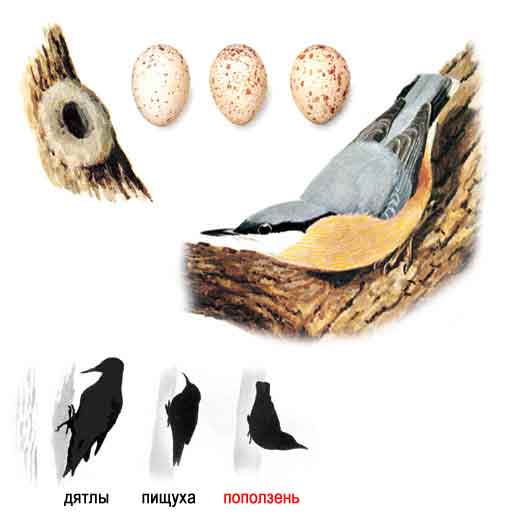|
Our
Beautiful World
|
Eurasian Nuthatch, Sitta europaea
Rock Nuthatch, Sitta neumayer
En. Nuthatch, Da. Spætmejse, Du. Boomklever, Fi. Pähkinänakkeli, Fr. Sittelle torchepot,
Ge. Kleiber, It. Picchio muratore, No. Spettmeis, Sp. Trepador azul, Sw. Nötväcka

© http://www.ecosystema.ru/
 Photo: © Dennis Olsen It is a resident bird of deciduous woods and parkland, with some old trees for nesting. It feeds on insects, seeds and nuts. Its old name “nut-hack” derives from its habit of wedging a nut in a crevice in a tree, and then hacking at it with its strong bill. 
Foto © Kristin Vigander, Holmen 8.mai 2006 It has the ability,
like other nuthatches, to climb down trees, unlike species such
as woodpeckers The Eurasian Nuthatch
is 14cm long and has the typical nuthatch big head, short tail and Rock Nuthatch: |
 ANIMALS over 250 |
 BIRDS over 500 |
 FLOWERS over 225 |





